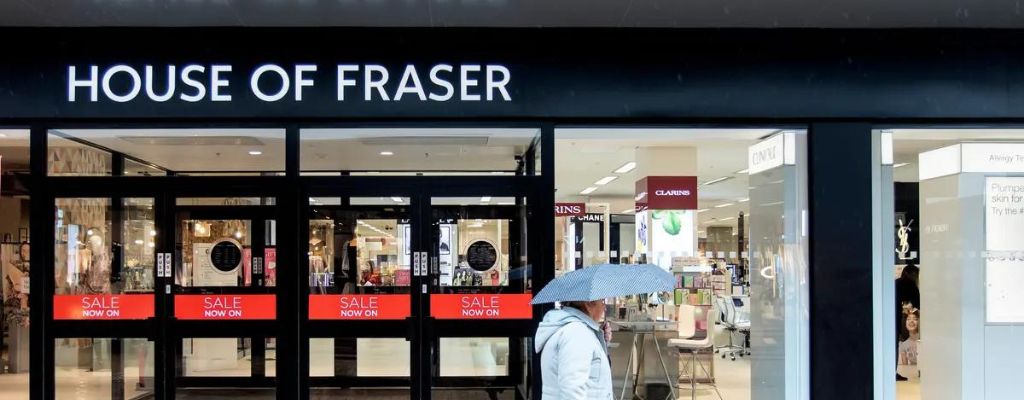Step back in time with us as we uncover the fascinating origins of one of the UK’s most iconic department stores, House of Fraser. Join us on a journey to Scotland where it all began, and discover how this beloved retail giant got its start. From humble beginnings to household name, learn about the rich history and heritage that shaped House of Fraser into what it is today. Get ready to be transported back to the early days and witness the birth of a true retail legend.
Introduction:
House of Fraser stands as an iconic department store chain in the United Kingdom, known for its quality products and rich history. However, many are unaware of its humble beginnings rooted in Scotland. In this blog, we delve into the early days of House of Fraser, tracing its origins from a small drapery shop in Glasgow to its evolution into a renowned retail giant.

From Drapery Shop to Retail Empire:
The story of House of Fraser begins in 1849 when Hugh Fraser and James Arthur opened a small drapery shop, Arthur and Fraser, in Glasgow. Initially serving the local community with textiles and clothing, the store quickly gained a reputation for quality and service. In 1871, the store underwent a significant transformation when Hugh Fraser’s sons, James and John, joined the business and expanded its offerings to include a wider range of goods, from furniture to household items.
As the business flourished, the store relocated to a larger premises on Buchanan Street in Glasgow, marking the beginning of House of Fraser’s expansion. Over the years, the company continued to grow through acquisitions and mergers, eventually becoming one of the leading department store chains in the UK. Despite its evolution into a retail empire, House of Fraser’s Scottish roots remained central to its identity, with Glasgow serving as its spiritual home.
Innovation and Expansion:
House of Fraser was not only known for its quality products but also for its innovative approach to retail. In the early 20th century, the company introduced several groundbreaking initiatives, including the introduction of fixed-price selling, which revolutionized the way goods were priced and sold in department stores. Moreover, House of Fraser was one of the first retailers to embrace modern advertising techniques, using newspapers and magazines to promote its products and attract customers.
Furthermore, House of Fraser’s commitment to customer service set it apart from its competitors, with the company placing a strong emphasis on providing a personalized shopping experience for every customer. From expertly trained staff to luxurious surroundings, House of Fraser stores offered a level of service and sophistication that was unmatched in the retail industry. As a result, House of Fraser continued to expand its presence across the UK, opening new stores in major cities and towns and cementing its reputation as a leading destination for quality goods and exceptional service.
The Rise of House of Fraser:
By the mid-20th century, House of Fraser had established itself as a dominant force in the UK retail market, with a network of department stores spanning the country. The company’s acquisition of other retail chains, including Harrods and Dickins & Jones, further solidified its position as a leading player in the industry. With its diverse portfolio of brands and products, House of Fraser became synonymous with quality, luxury, and style, attracting customers from all walks of life.
Moreover, House of Fraser’s commitment to innovation and customer service continued to drive its success, with the company embracing new technologies and trends to stay ahead of the curve. From the introduction of self-service shopping to the launch of its own credit card, House of Fraser remained at the forefront of retail innovation, constantly evolving to meet the changing needs and preferences of its customers. As a result, House of Fraser enjoyed decades of prosperity and growth, becoming a household name and an integral part of the British retail landscape.
Cultural Impact and Legacy:
Beyond its commercial success, House of Fraser had a significant cultural impact on British society, shaping the way people shopped and interacted with retail brands. The company’s department stores were not just places to buy goods but also social hubs where customers could socialize, dine, and experience the latest trends in fashion and lifestyle. Moreover, House of Fraser played a vital role in supporting local communities, sponsoring events, and charitable initiatives that benefited those in need.
Furthermore, House of Fraser’s legacy lives on in its iconic buildings, many of which are architectural landmarks and symbols of the cities they inhabit. From the grandeur of Jenners in Edinburgh to the Art Deco splendor of Frasers in Glasgow, these historic buildings are a testament to House of Fraser’s enduring influence and legacy. Today, House of Fraser continues to uphold its Scottish roots and heritage, paying homage to its founders and their vision of providing quality goods and exceptional service to customers across the UK.

Conclusion:
In conclusion, the early days of House of Fraser offer a fascinating glimpse into the company’s Scottish roots and its journey from a small drapery shop to a retail empire. Through innovation, expansion, and a commitment to customer service, House of Fraser became one of the UK’s most beloved and iconic department store chains, leaving an indelible mark on British retail history. As House of Fraser continues to evolve and adapt to the changing retail landscape, its Scottish heritage remains at the heart of its identity, reminding us of the company’s humble beginnings and enduring legacy.




